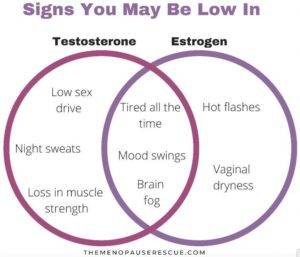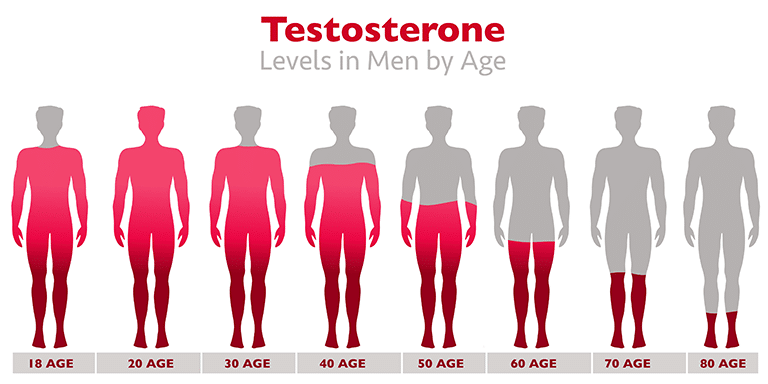Skinspirations provides bioidentical hormone optimizatio to relieve the symptoms of unbalanced, suboptimal hormones, some of which start dropping in our twenties. With the restoration of optimal hormone levels, you can bring back the energy, passion for life and romance, mental focus, optimism, motivation, strength, and many other qualities of life that you had in your earlier years. Most of our patients find that they hadn’t realized how much some of those qualities had diminished until their hormone levels are returned to optimal levels.
Don’t assume that the changes in your body and mind that have developed over the years are irreversibly due to aging. Much of aging is due to a decrease in hormones and restoring them to optimal levels can make you feel many years younger and slow down aging.
Hormones are chemicals your body makes that carry messages through your bloodstream to nearly every organ system. They control multiple physical processes, including metabolism, mood, appetite, sleep cycles, libido, fertility, and growth, so a change in their levels has multiple repercussions.
Signs and Symptoms of Low Hormone Levels

- low libido and orgasm intensity
- loss of muscle mass and increased fat
- low energy and lack of motivation
- lack of concentration
- depression and/or mood swings
- hot flashes in women
- weight gain
- insomnia
- erectile dysfunction
- painful joints
- thinning skin
- hair loss
- bladder leakage
- vaginal dryness in women
- increased risk of bone fractures
- night sweats
Hormone Levels And Age
Women’s estrogen levels start declining in their forties and are almost undetectable by their early fifties. Progesterone decreases about ten years before menopause, causing an imbalance with estrogen. Testosterone in women peaks in their twenties but declines about 50% by the age of forty. Many women are surprised to learn that they produce more testosterone than they do estrogen and the lack of adequate testosterone levels is responsible for some of the symptoms they attribute to menopause. Replacing testosterone in women can decrease hot flashes, and improve mood, libido, energy levels, concentration, orgasm intensity, skin thickness, and muscle and bone mass while reducing the risk of cardiac disease, breast cancer, and osteoporosis.

Men’s testosterone levels begin dropping around the age of forty and continue to decline by 1 to 3% per year. In the past, it was generally accepted that the “normal” range for male testosterone in the blood was 300-1000 ng/dl even though many men experience symptoms of low testosterone when the blood levels are still in this range. Studies now show that maintaining a testosterone level in the higher end of this range can prevent low testosterone symptoms.
Why is it important to use bioidentical hormone replacement?
Bioidentical hormone therapy (BHT) is the use of hormones that are identical to your own body’s hormones. They have the same molecular structure as your naturally occurring hormones and unlike synthetic hormones, they fit the hormone receptor sites perfectly, like a key in a lock. Therefore, their messages are translated exactly like your body’s hormones. Synthetic hormones have a different molecular structure than those produced by your body and they don’t fit your hormone receptors perfectly so they can cause unwanted side effects.
The bioidentical hormones prescribed most commonly are estrogen, progesterone, and testosterone and they are available from both compounding pharmacies and retail pharmacies. Compounding pharmacies are able to provide custom strengths and dosage forms of hormone replacement including pellets, creams, injections, and patches.
Hormone pellets inserted under the skin steadily release the hormones for about three to five months in women and four to six months in men before they need to be replaced. Levels with pellets are more consistent than with other hormone therapy forms and side effects are less common. Improvement in low hormone level symptoms are usually seen within several weeks after starting hormone therapy but full effects may not be evident for up to three months.
Is hormone replacement therapy safe?
Many women are afraid to get hormone replacement because they’ve been misled about the risks. Twenty years ago the Women’s Health Initiative (WHI) study concluded women taking a combination of oral estrogen obtained from horse urine and a synthetic version of progesterone had an increased risk of breast cancer, heart attacks, strokes, and blood clots. Because synthetic or animal hormones were used in that study, these conclusions didn’t apply to bioidentical hormone replacement, and research done since then has shown that bioidentical hormone replacement is not only safe but has health benefits. A pooled statistical analysis of thirty clinical trials found that women who began hormone therapy before age 60 had a 39% lower risk of death than women who didn’t take hormone replacement.
Scientific studies also have shown that optimal testosterone levels don’t increase the risk of prostate cancer. If it did, teenage boys would have a high rate of it. But to be on the safe side, all men at high risk for prostate cancer or who have it currently should discuss potential hormone therapy with their urologist before starting.
How is the hormone pellet procedure performed?
The hormone dosage is customized based on your symptoms and your hormone lab test results. The large grain rice-sized pellets are usually inserted under the skin of the upper hip or flank through a small tube after the area has been cleansed and anesthetized. Except for avoiding strenuous exercise the first few days after insertion, you can immediately resume your normal activities. The insertion site usually feels bruised for up to two weeks.
Side effects from hormone pellet treatment
Hormone pellet insertion can cause bruising, transient bleeding, swelling, hyperpigmenation, and rarely infection. Because men’s pellets are larger, their insertion is associated with a higher risk of pellet extrusion, drainage, and scarring.
Some women experience temporary breast swelling and tenderness or uterine bleeding when they start estradiol therapy which if it persists can be managed by reducing the next dose. Fluid retention occurs occasionally but can be managed with a mild diuretic. Most women don’t have any side effects with testosterone therapy but a small number experience an increase in facial hair or acne, which can be addressed by reducing the dose.
How do I get started with hormone pellet therapy?
The first step in determining if you have the symptoms of hormone deficiency is to fill out a hormone questionnaire, available on our website for women and for men. Next, you’ll need to have blood tests done at least ten days before your scheduled consultation so that we can determine from your results if you’ll benefit from hormone therapy. At your consultation, we can go over our recommendations and provide your first pellet treatment if desired.
Check with your insurance provider to see if they cover the charges for the lab tests required to start hormone therapy or ask your doctor. If the labs are not covered by insurance or the deductible is high, men can purchase the required initial lab panel for $299 at https://www.ultalabtests.com/test/biote-male-new-patient-pre-pellet and women can get theirs for $250 at https://www.ultalabtests.com/test/biote-female-new-patient-pre-pellet. The blood is drawn at your local Quest location. If you have the results of any labs done in the last six months, you’ll only need to have blood drawn for any of the required tests below that weren’t done at that time. Skinspirations does not have any contracts with insurance companies but can provide you with a requisition form that includes the required lab codes.
Required initial lab tests:
Women
- Estrone (E1) & Estradiol (E2)
- FSH
- Testosterone Total
- TSH, free T4 & free T3, TPO
- CBC
- Complete Metabolic Panel (CMP)
- 25-OH Vitamin D & B12
- DHEA
Men
- PSA
- Estradiol
- Free & total testosterone
- SHBG
- CMP
- CBC
- TSH, free T3 & free T4, TPO
- 25-OH Vitamin D & B12
- DHEA
Treatment followup tests
About six weeks after your first pellets are inserted, you’ll need to have just a few lab tests done to measure your levels so that at your next visit, we can adjust your pellet doses if necessary. Women can purchase the tests needed at https://www.ultalabtests.com/test/biote-female-post-pellet and men at https://www.ultalabtests.com/test/biote-male-post-pellet.
What is the price for hormone pellet therapy at Skinspirations?
-
-
- Hormone consultation for current patients is currently $225 and for new patients, is $275.
- Female pellet treatments (done at least 3 months apart) are $395 per treatment
- Male pellet treatments (every 4 months) $500 per treatment
- Male pellet treatments (every 6 months) $625 per treatment
-
A Note About Insurance Coverage for Bioidentical Hormone Replacement
While it may not seem fair, many insurance companies do not look upon hormone therapy as being medically necessary even though it may be saving them money in the long run because of the health benefits it provides. They usually classify it as being an “elective” treatment. We encourage prospective hormone therapy clients to set the insurance dilemma aside when selecting a provider. Out-of-pocket healthcare expenses can be difficult to accept when you’ve spent so much money on health insurance premiums but those who want to focus on prevention may have to do just that. Hopefully, it will change soon but for now, most people have to pay cash for more cutting-edge preventative therapies like bioidentical hormone replacement and cell therapy.
When you consider the amount that may be saved on medications for sleep, depression, anxiety, elevated cholesterol, diabetes, and osteoporosis, plus benefits to quality of life, relationships, and job performance, the cost of pellet therapy is well worth it. At this point in time we have to accept that most people will have to budget separately for these cutting-edge preventative therapies, particularly those related to healthy aging.



